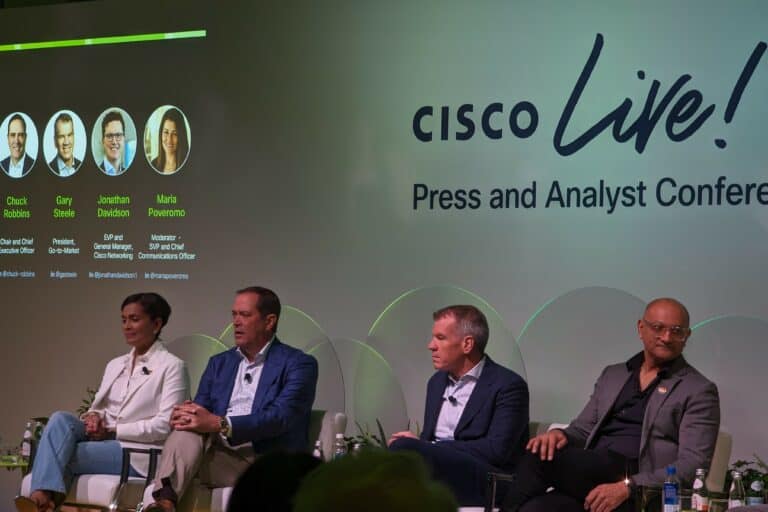For the second time in 2024, Cisco is laying off thousands of employees, adding up to 7 percent of its workforce. Yet this is only part of a larger direction change within the company that has been underway for some time. Today, this has resulted in a new business unit consisting of the previously separate components Networking, Security and Collaboration. This gives the platform approach a strong and also necessary boost.
The new unit will be led by Jeetu Patel, who was already EVP and GM at the Security and Collaboration divisions. He will become Chief Product Officer through the change and has been responsible for coordinating the three teams since this week. Jonathan Davidson, formerly EVP/GM of Cisco Networking, will have an advisory role.
Simplification
The new structure fits with the plans Cisco has already announced. The simplification of its offerings has been an explicit ambition of the company for two years. This is proceeding in increments, first with the creation of the Security Cloud and last year also a Networking Cloud. These are focused on simplicity, monitoring and integrations. Some of this vision had very practical short-term effects, such as the simplification of licensing, but also more ambitious plans with Cisco harbouring ambitions for rolling out policies for networking and security in one package. That’s not a change that will happen overnight. Coordinating a focused direction will now become Patel’s job.
In particular, Networking and Security should no longer live separately, as the competition has already realized. This became clear once again when we recently described the new HPE Aruba Networking offering. “The network is a security solution,” concluded Larry Lunetta, VP of AI, Security and Networking Product Marketing at HPE. After all, every cyberattack at some point traverses a network, and usually, that’s where they begin in the first place. Monitor the network and segment it when problems arise and one can prevent an organization from getting hit by a full-blown ransomware attack.
Jeetu Patel also spoke to Techzine on the subject in April, back when Cisco announced Hypershield. Patel called it “the best story yet” from Cisco, while CEO Chuck Robbins spoke of “one of the most significant security innovations in our [Cisco’s, ed.] history.” The move to a new security architecture has long since begun, and it is much needed because of the major dangers surrounding API security and the ever-pervasive patching problem. Automation is the magic word here; only by utilizing automated systems can organizations really move forward. Meeting this demand from the market requires a platform approach, as Cisco more than ever aspires to.
Read more: Cisco Hypershield: new security architecture protects against new (and old) problems
The Splunk factor
The Splunk acquisition is also a factor that cannot be ignored, and that’s for 28 billion reasons. The declining sales of networking hardware, which Cisco managed to catapult to the highest enterprise value in the world all the way back in 2002, cries out for a change in direction. The latest quarterly figures show a stark contrast between revenue from security (+81 percent vs. Q2 2023) and observability (+41 percent) on the one hand and revenue from networking (-28 percent) on the other. By the way, the high percentages are almost entirely due to Splunk: Cisco itself wouldn’t have achieved double-digit percentage growth when it comes to security or observability. Not surprisingly, Cisco’s change in direction matches the core competencies of the newly acquired Splunk.
Acquisitions also tend to lead to inevitable double occupancies, especially in sales, marketing and HR, so rounds of layoffs are inevitable. The stock market isn’t seeing Cisco’s ventures as a bad sign either and seems to understandably be rewarding Cisco for its quarterly results, which exceeded analysts’ expectations.
Changes at the top of the company may lead to a reduction in roles, but that should be beneficial in the long run. After all, the division led by Patel has to make choices that might previously have been made three times within three separate units of Cisco. Many an analyst sees a lot of positives in this: in fact, the change should have happened much earlier, some think. But: what’s done is done, Cisco has finally tied the knot. Time to go all-out for the execution of its promising plans.
Also read: Cybersecurity challenges keep CISOs awake at night
